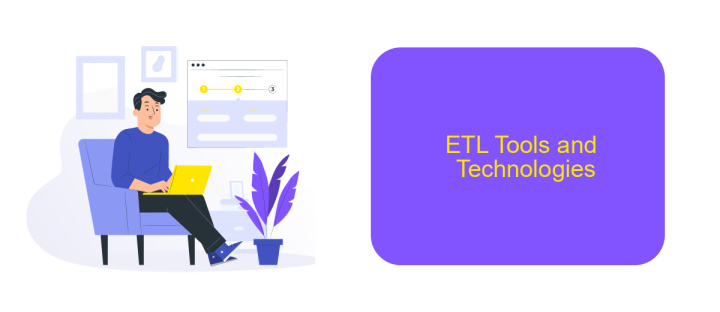What Does ETL Mean in Data
ETL stands for Extract, Transform, Load, and it is a crucial process in data management and analytics. This methodology involves extracting data from various sources, transforming it into a suitable format, and loading it into a destination system, such as a data warehouse. Understanding ETL is essential for leveraging data effectively to drive business insights and informed decision-making.
Introduction to ETL in Data
ETL, which stands for Extract, Transform, Load, is a critical process in the field of data management and analytics. It involves extracting data from various sources, transforming it into a suitable format, and loading it into a destination database or data warehouse. This process ensures that data is clean, consistent, and ready for analysis.
- Extract: Gathering raw data from multiple sources such as databases, APIs, and files.
- Transform: Converting the extracted data into a desired format, including data cleaning, normalization, and aggregation.
- Load: Loading the transformed data into a target system, such as a data warehouse or analytics platform.
ETL processes are essential for businesses to make data-driven decisions. Tools like ApiX-Drive can simplify the integration and automation of ETL tasks, allowing organizations to efficiently manage their data workflows. By using such services, companies can ensure their data is reliable and accessible, ultimately enhancing their analytical capabilities.
Components of the ETL Process

The ETL process, which stands for Extract, Transform, Load, is a fundamental procedure in data management and integration. The first component, Extraction, involves retrieving raw data from various sources such as databases, APIs, and flat files. This step ensures that all relevant data is collected for further processing. Tools like ApiX-Drive can facilitate this process by automating data extraction from multiple platforms, thereby saving time and reducing errors.
The second component, Transformation, is where the raw data is cleaned, enriched, and formatted to meet specific requirements. This step may involve filtering out irrelevant data, aggregating information, and converting data types to ensure consistency. Finally, the Load component involves transferring the transformed data into a target system, such as a data warehouse or a business intelligence platform. This ensures that the data is readily available for analysis and reporting, enabling organizations to make informed decisions based on accurate and up-to-date information.
Benefits of Using ETL

ETL (Extract, Transform, Load) is a crucial process in data management and analytics. It enables organizations to efficiently move and transform data from various sources into a centralized data warehouse or data lake, ensuring data consistency and reliability.
Here are some key benefits of using ETL:
- Data Integration: ETL processes enable seamless integration of data from multiple sources, providing a unified view of the organization's data.
- Improved Data Quality: During the transformation phase, data is cleaned and validated, ensuring high-quality and accurate data for analysis.
- Enhanced Performance: By pre-processing data before loading it into the data warehouse, ETL improves query performance and reduces the load on the data warehouse.
- Scalability: ETL tools can handle large volumes of data, making it easier to scale data operations as the organization grows.
- Automation: ETL processes can be automated, reducing manual intervention and minimizing errors. Services like ApiX-Drive facilitate the automation of data integration tasks, streamlining the ETL workflow.
Incorporating ETL into your data strategy not only enhances data management but also empowers your organization to make data-driven decisions with confidence. By leveraging ETL tools and services, businesses can ensure that their data is always accurate, timely, and readily available for analysis.
ETL Tools and Technologies

ETL tools and technologies are essential for efficiently managing and transforming data. These tools help extract data from various sources, transform it into a usable format, and load it into a destination system. They are crucial for businesses looking to leverage their data for analytics, reporting, and decision-making.
Several ETL tools and technologies are available, each with its own set of features and capabilities. They range from open-source solutions to enterprise-grade platforms, catering to different needs and budgets. Choosing the right ETL tool depends on factors such as data volume, complexity, and integration requirements.
- Apache NiFi
- Talend
- Informatica PowerCenter
- Microsoft SQL Server Integration Services (SSIS)
- ApiX-Drive
ApiX-Drive, for example, is a versatile tool that simplifies the integration process by allowing users to connect various applications and automate data workflows without extensive coding. This makes it an excellent choice for businesses looking to streamline their ETL processes and improve data accessibility across different platforms.
Best Practices for Implementing ETL
Implementing ETL (Extract, Transform, Load) processes effectively requires a strategic approach. First, ensure data quality by validating and cleansing data at each stage. This prevents corrupt data from infiltrating your system. Use robust error-handling mechanisms to catch and log issues without interrupting the entire process. Additionally, schedule ETL jobs during off-peak hours to minimize system load and avoid performance bottlenecks.
Another best practice is to leverage automation tools like ApiX-Drive to streamline integrations. ApiX-Drive enables seamless data transfer between various applications, reducing manual intervention and errors. Implement incremental data loading to update only the changed data, which saves time and resources. Regularly monitor and optimize ETL performance, adjusting configurations as needed to handle increasing data volumes. Documenting your ETL processes and maintaining clear communication among team members will also ensure long-term success and scalability.
FAQ
What does ETL stand for in the context of data?
Why is ETL important in data management?
What are the main challenges in implementing ETL processes?
How can ETL processes be automated?
Can ETL be integrated with other systems or applications?
Strive to take your business to the next level, achieve your goals faster and more efficiently? Apix-Drive is your reliable assistant for these tasks. An online service and application connector will help you automate key business processes and get rid of the routine. You and your employees will free up time for important core tasks. Try Apix-Drive features for free to see the effectiveness of the online connector for yourself.

